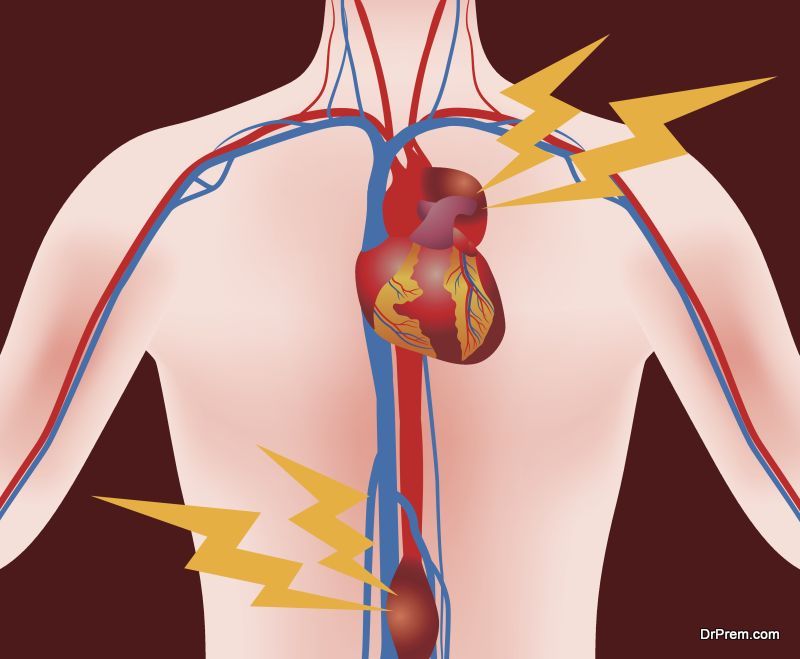An Aortic aneurysm is simply a bulge in a section of the aorta. The main function of the aorta is to carry oxygen rich blood from the heart to the rest of the body. However, a burst in it can result in serious consequences, even death.
Basics of aortic aneurysm
Understanding aortic aneurysm means to understand the organs at play here. The human heart is the most important muscle of the body and the aorta is the largest blood vessel in the body. It helps to push all the blood that the heart pumps along. Although the aorta is tough and sturdy, sometimes the walls can weaken and a balloon like budge appears. However, having a bulge is common and some aneurysms burst while many don’t. The force of the blood pumping can break the layers of the artery wall causing the blood to leak through in what is known as dissection. If the pressure is intense the aneurysm can burst completely and cause bleeding inside the body. This is known as a rupture. Both of these scenarios result in death and constitute what is known medically as aortic aneurysm. A burst artery in the brain usually results in what is commonly known as as a stroke.
Aortic Aneurysm symptoms and diagnosis have always been studied and analyzed by the medical departments. But even with all the knowledge and progress made in healthcare science, many people continue to die. Close to ten thousand people died in the United States in the year 2014 due to aortic aneurysm alone. And a further seventeen thousand cases were registered where a patient died due to aortic aneurysm being a contributory factor (example a stroke leading to cardiac arrest). Aortic aneurysm is also more reported in males with two-third of all casualties being males between ages 18-75.
The two kinds of Aortic Aneurysm
Aortic Aneurysm is of two types; or rather it affects two major regions of the body: The thorax (located in the chest) and the abdomen.
Thoracic aortic aneurysm: A thoracic aortic aneurysm occurs in the chest region. The causes are usually high blood pressure, high cholesterol or a sudden injury. Although genetics is usually discounted, there have been cases of people with inherited connective tissue disorders having thoracic aneurysm. Another common cause is ‘atherosclerosis’ which is a medical term for hardening of the arteries.
The signs or symptoms include shortness of breath or trouble breathing normally and sharp pain in the chest and upper back region.
Abdominal aortic aneurysm: The aorta passes through the abdomen and this is where a bulge can form. This bulge is called abdominal aortic aneurysm. Treatment for Aortic Aneurysm of the abdomen is difficult because the signs don’t appear until the artery actually bursts, and quite often it doesn’t carry any symptoms at all. Perhaps due to this factor, abdominal aortic aneurysm is more common than thoracic aortic aneurysm and more common in men and among people aged 65 years and older.
However, signs may include a deep pain in the side of the abdomen, back pain and sometimes a throbbing sensation near the navel.
The causes aren’t very clear either but doctors state that high blood pressure or smoking could be a likely cause. Genetic predisposition also cannot be ruled out. Further factors could be a traumatic injury or an infection. Abdominal also aneurysm can lead to blood clotting and these clots break off and flow to other regions of the body like the legs and kidneys.
Treatment
Medication and surgery are the two main treatment solutions for aortic aneurysm. The medication helps in keeping the blood pressure in check and surgery can repair or even replace the injured section of the aorta. Treatment for Aortic Aneurysm, especially if the artery has burst in a delicate region can be a complicated affair and the U.S preventive services task force recommends everyone, but especially men aged 65-75 to get ultrasound screenings done even if there are no symptoms. Routine screenings are encouraged, and based on their results medication can be prescribed to keep issues like blood pressure and cholesterol in control. Other methods include ultrasound, X-ray, an echocardiogram and CT scans. However, if the aneurysm grows rapidly in size and becomes a problem, then surgery is the only option.





